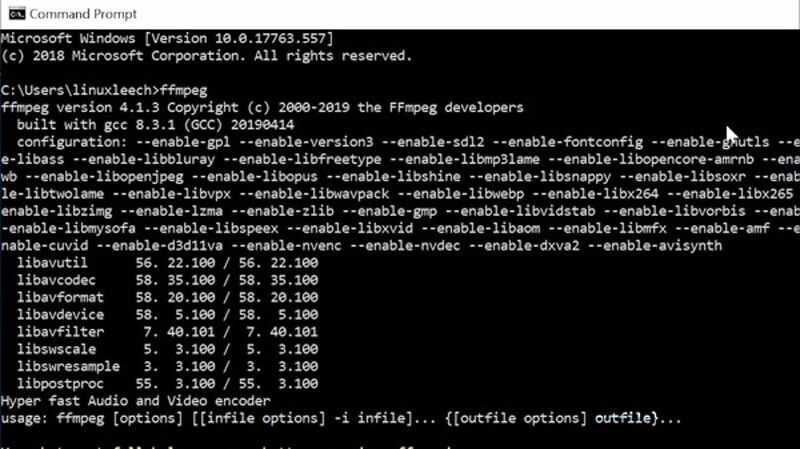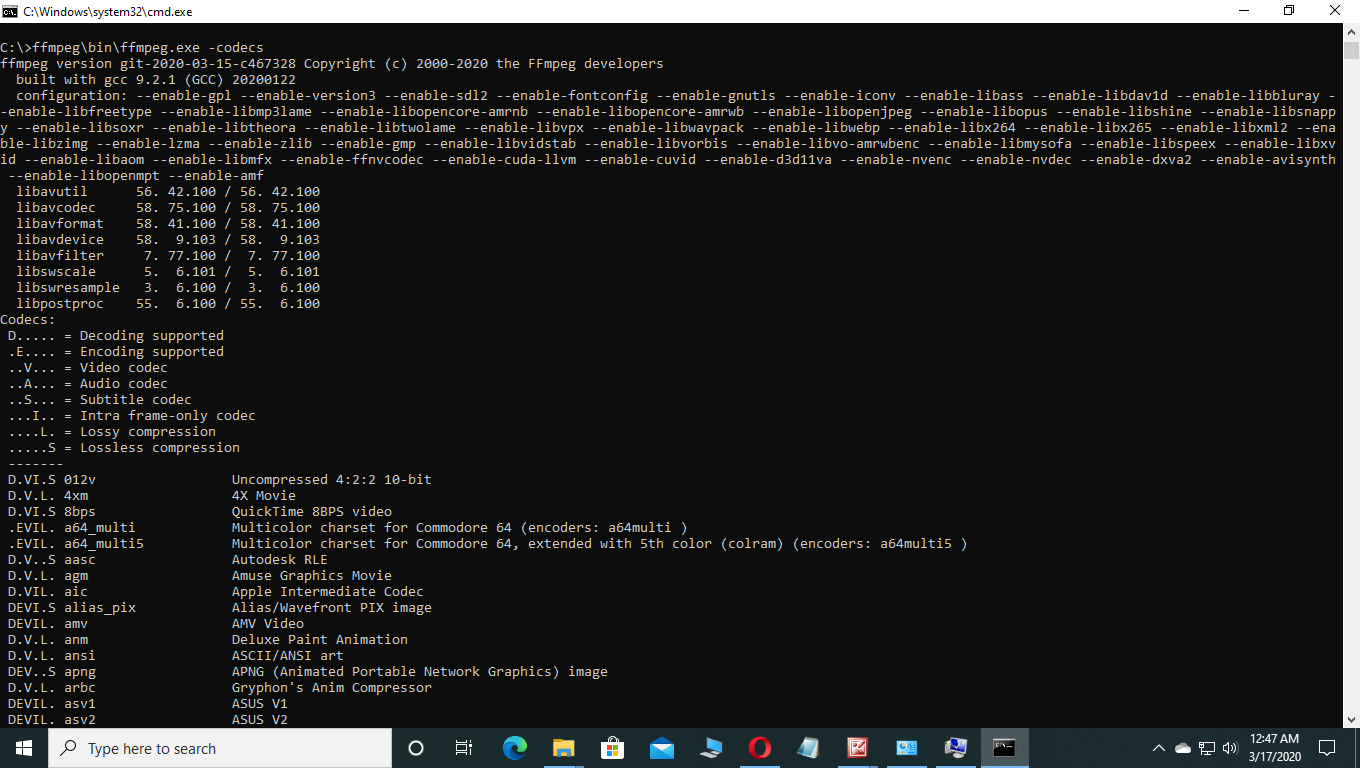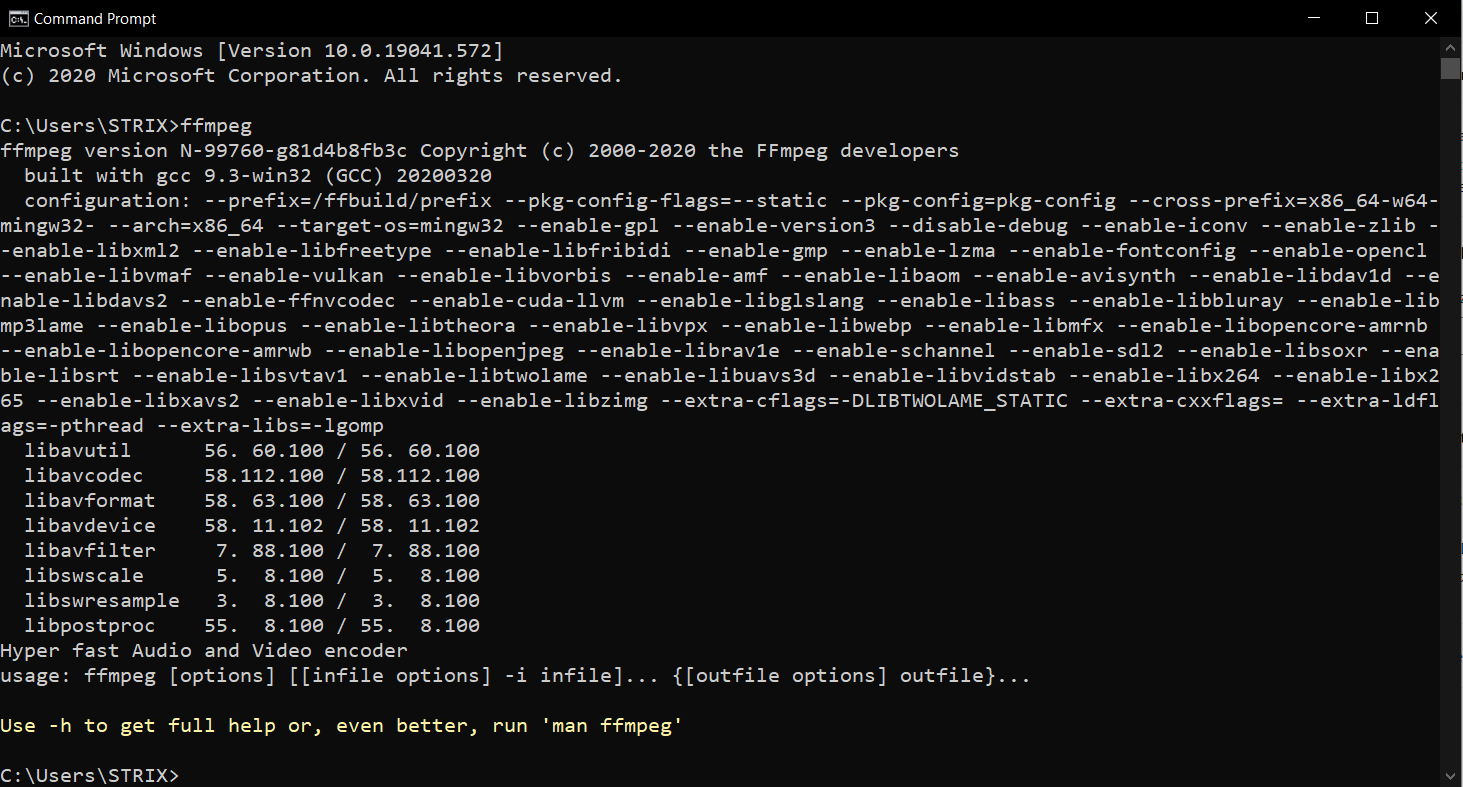
To verify if your OS is 32-bit or 64-bit, click on the Start icon on the left side of your desktop then type Run in search bar and in run write the command of dxdiag and press the Enter key. The download option highlighted in green is for 32-bit Windows OS while the other option in red is for 64-bit Windows OS. Once you’ve done that locate the download option, as shown below. To download the tool, click here to go to the webpage. From the very first step of downloading the program to cropping an audio file, this tutorial aims to help you cover the basics, so that you can play around more later on. Not everyone knows how to use it though and for that purpose, I’ve come up with this guide on how to use FFmpeg for Windows OS. It is available for Windows, Linux and Mac operating systems. The good thing about this tool is that it is absolutely free to use. SSH into your Ubuntu server and update the apt package index.FFmpeg is a very powerful and great command line tool used for performing various conversion operations on audio and video files. To install FFmpeg on Ubuntu, follow these steps:ġ. Conveniently, you can install FFmpeg through your distro’s package manager, such as apt in Ubuntu. As such, your computer must have decent hardware capacity.įFmpeg is available in the default repositories of most Linux distributions. Multimedia processing is generally a resource-intensive task.

This tutorial will be using Ubuntu 20.04, Windows 10, and macOS Big Sur for the installation. You’ll need a computer running on a compatible operating system, such as Windows, Linux (RHEL-based, Debian-based, or Ubuntu-based), and macOS.If you’d like to follow along, be sure you have the following. This tutorial will be a hands-on demonstration. Example 4: Extracting Audio from a Video File.

Example 3: Changing the Video Resolution.Example 2: Changing the Container without Encoding.



 0 kommentar(er)
0 kommentar(er)
